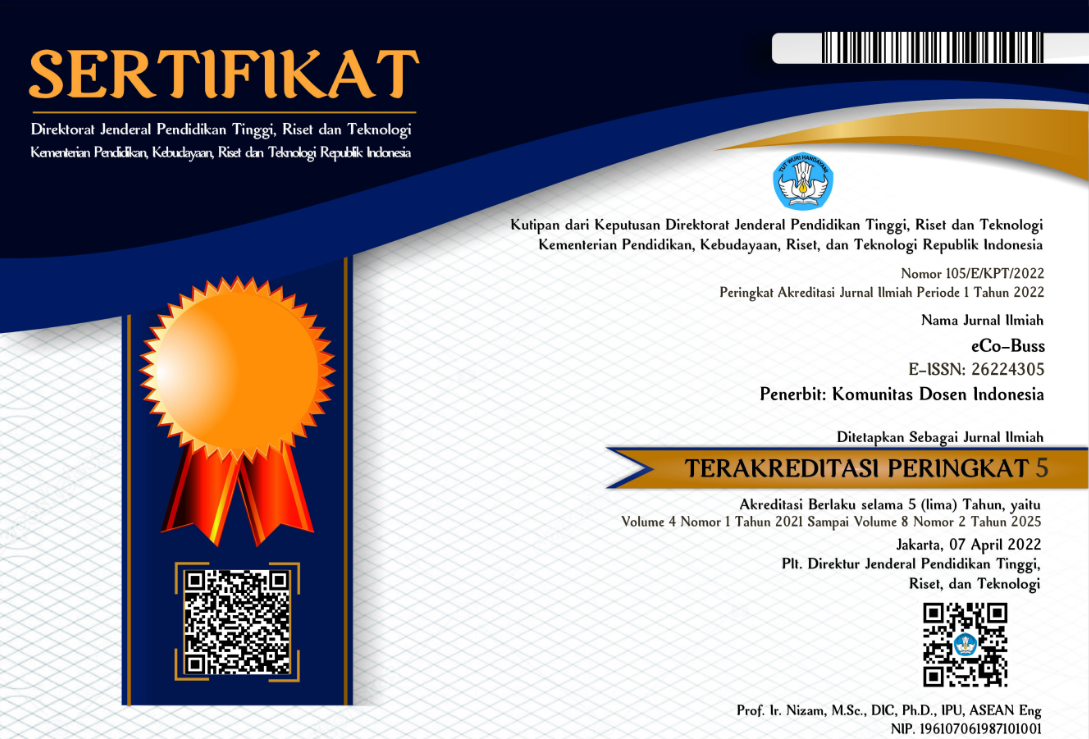Article Originality Check
To ensure the originality and scientific integrity of the articles published, the eCo-Buss Journal uses Crossref Similarity Check powered by iThenticate. This similarity check helps identify potential plagiarism and ensures that submitted work is original. Here is a detailed description of the similarity check process:
-
Purpose of Similarity Check
The similarity check is conducted to detect and prevent plagiarism, whether intentional or unintentional. It helps maintain ethical standards and integrity in the research published in the eCo-Buss Journal. -
Process of Checking
All manuscripts submitted to the eCo-Buss Journal will undergo a similarity check using Crossref Similarity Check powered by iThenticate. This tool compares the submitted manuscript against billions of documents in the database, including journal articles, books, and web content. -
Similarity Report
After the check, a similarity report is generated. This report shows the percentage of similarity between the submitted manuscript and other sources in the database. Sections of text that are similar to other sources are highlighted for further review. -
Follow-Up Actions
If the similarity report indicates a high level of similarity, the editor will review the highlighted sections to determine if plagiarism is present. Authors will be notified if any issues need to be addressed, and they may be asked to revise their manuscript to reduce similarity. -
Ethical Compliance
Authors are expected to adhere to research ethics standards and ensure that all submitted work is original and properly cited. The use of Crossref Similarity Check powered by iThenticate is part of the eCo-Buss Journal’s commitment to maintaining scientific integrity and ensuring the quality of publications.
By utilizing Crossref Similarity Check powered by iThenticate, the eCo-Buss Journal aims to make a meaningful contribution to promoting ethical research practices and maintaining reader trust in the quality of the published content.


